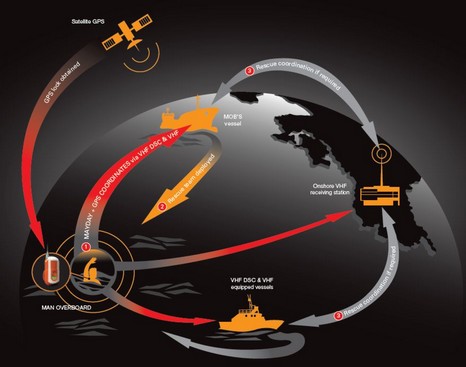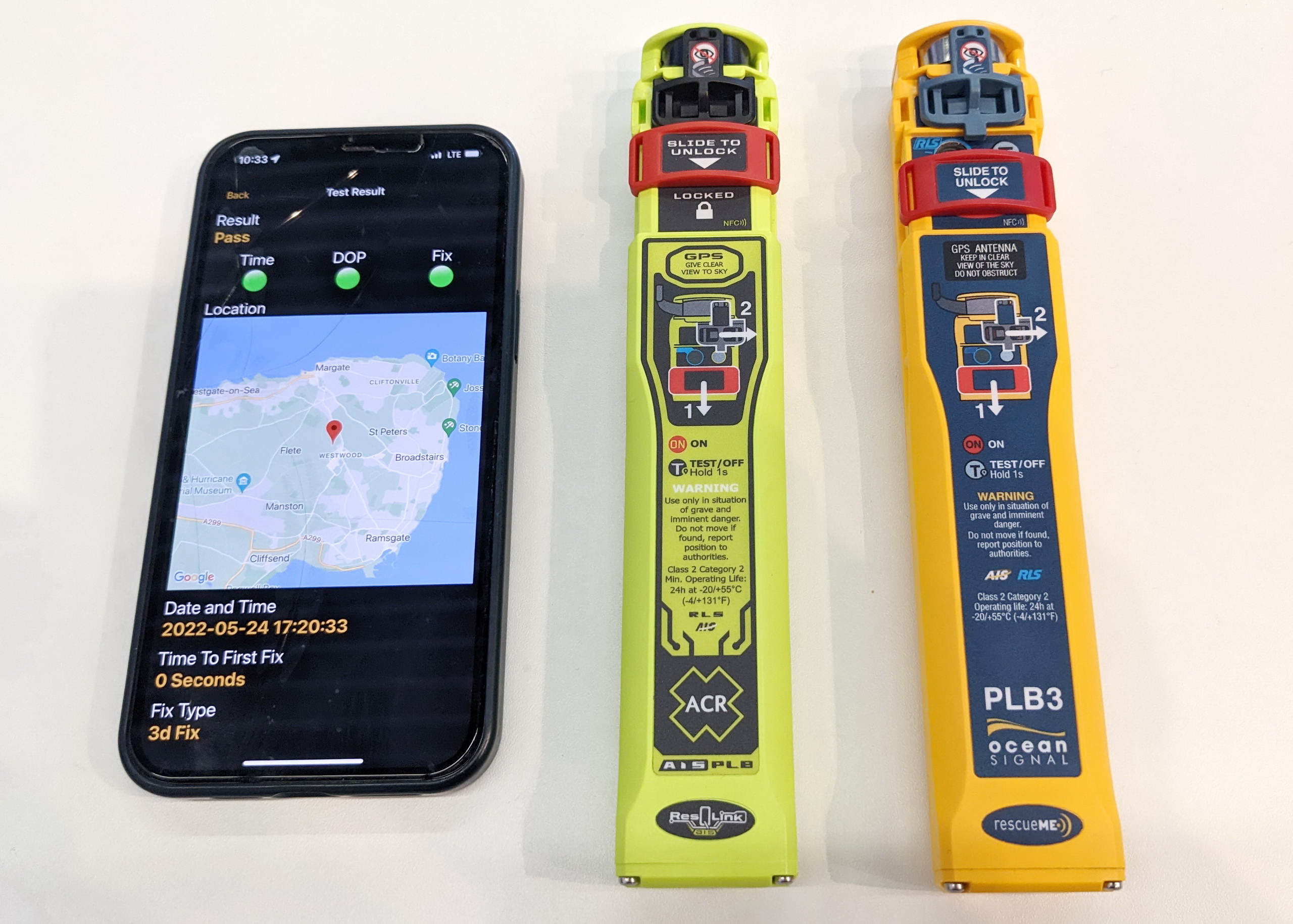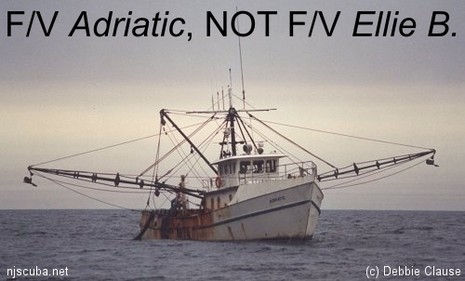Mobilarm VPIRB, interesting idea with the wrong acronym?

I’ve long thought that handheld VHF DSC can have real value in a MOB situation, which is one reason I’m delighted that the HX850S is shipping and a similar Lowrance model should soon follow. I also figure that we’ll soon see more Spot-like satellite messenger/GPS/-safety products, and there will be even more confusion about how they work relative to official SARSAT system with it PLBs and EPIRBs (as referenced at the end of the recent FOB entry). But I had no idea until today that Mobilarm was developing a dedicated VHF/DSC/GPS man overboard device, and apparently marketing it as an alternative to a personal EPIRB.
The Mobilarm V100 “VPIRB” above—due to ship in September for $749—looks like a well-thought-out and built device, as you can thoroughly check out on Mobilarm’s product page. It even sends out the specific DSC distress message “Man Overboard” and a synthesized voice alert that should get the attention of any boat within handheld VHF range that has its radio on, even if its not DSC. And Mobilarm, mind you, has been competing in the MOB alarm niche for some time.
But what the heck is this “VPIRB” business? Mobilarm claims it stands for “VHF Position Indicating Radio Beacon,” but isn’t the acronym confusingly close to EPIRB, i.e. an Emergency Position Indicating Radio Beacon. And isn’t an EPIRB, or its personal PLB cousin, able to alert the SARSAT authorities from almost any spot in the ocean, while a VPIRB—by definition just a handheld VHF device transmitting from water level—only has a range of maybe 5 miles? And isn’t the confusion magnified by the global-looking diagram below, which is absurdly out of scale? Finally, SailWorld.com has an article about the V100 VPIRB which quotes a Mobilarm marketing person saying:
“The Mobilarm V100 VPIRB is a perfect alternative to the personal 406 EPIRB and 121.5 MHz personal locator beacons. If you carry a personal EPIRB, you can easily carry a VPIRB instead. The only time you would choose a personal EPIRB over the VPIRB if you were sailing or power-boating single-handed.”
I’m guessing that Mobilarm means that claim only regarding man overboard situations and, not, say, in the situation where your vessel is sinking when beyond anyone’s VHF range. Am I misunderstanding something about this product and its confusing acronym? If not, I’d like to suggest to Mobilarm and any other company developing distress communicators that they not be named anything like PLB or EPIRB unless they actually use the SARSAT technology that most boaters have learned to associate with those terms. We’re confused enough already!














While I fully agree that using PLB or EPIRB for non-SARSAT items will lead it confusion I have to say in this case I would disagree with you Ben. I don’t want any more stupid accronyms and fine with the adjustment to VPIRB in the way they have. I have always questioned the use of a PLB for MOB situations except of course for singlehanded sailors. I certainly appreciate the global coverage of an EPIRB for vessel distress, but I guess I figure I would always have time to grab the EPIRB if mounted just inside the companionway. Maybe this is naive, or maybe I only go offshore on seaworthy boats I trust not to sink in a few seconds (except of course that RO-RO ship in college that I was sure would go down in seconds due to all the watertight cargo doors being broken).
What else would you call this thing? I think the V vs. E shows that it is not an EPIRB, and prefer it to some new acronym that has no meaning. I will agree that the rescue diagram is HIGHLY confusing to anyone without proper knowledge of VHF range and should be taken off their website IMMEDIATELY!
Very cool product, but doesn’t $750 for a VERY limited VHF radio seem a bit steep? The DSC standard Horizon unit mentioned above is only $250 and actually has some other uses (like a radio!) Get that thing down to $200 and I will add it to my kit.
$750 competes with things like the lifetag system from Raymarine, but really this thing ought to be the same price a single tag rather than the whole system. Maybe a little more. You need one of these **ON** each of your crew in case the go over.
I like the idea a lot, if lifetag had a 5 mile range and called all boats instead of just yours that’d be neato.
This seems like an interesting idea, but it needs to be a lot less expensive. It’s almost as expensive as the PLBs. I do like the idea that it can alert a DSC VHF. That seems like a big improvement over the standalone MOB systems as it will alert any boat within VHF range.
This would also be a nice add on feature for a handheld VHF. We are starting to see handheld VHFs with GPS. This would be a nice addition (e.g., a MOB button), plus you could talk to the boat you fell off. Handheld VHF as getting pretty small.
I don’t know … something just feels wrong about the idea of an automated device transmiting voice on channel 16.
I’m ok with the acronym, it could define a new class of device and people will come to understand that “V” is not “E”. But I completely agree that the graphic is very misleading, especially with only 1 watt of power. That graphic looks like a product liability lawsuit waiting to happen.
It looks like they’ve done a nice job of industrial design and functionality, but nothing that justifies being 3x the cost of the HX850S which has 5 watts of power, a display, full radio, etc. Put a different rubber duck antenna on the HX850S and you’ve got more functionality, more power and an extra $500 in your pocket.
Better yet, add VHF/DSC to a Garmin Rino and you’ve got a much more versatile product than the HX850S in the same form factor as the VPIRB and half the price (basic Rino is $200). That’s what I would like to strap to my harness/PFD and would love to have in the dinghy.
And of course it’s too bad that the NavNet3D MFD won’t display the DSC position transmitted by either the VPIRB or the HX850S.
I like the DSC idea as a “local” device that uses technolgy most of us already have onboard, but it should be $250, not $750.
From a reader:
What do you know about MMSI’s and SAR data? I’ve heard that only the FCC issued MMSIs, and the associated SAR data, are guaranteed to update the international SAR/GMDSS database. The implication being that the MMSIs from BoatUS and others who are authorized to issue MMSIs for non-SOLAS vessels do not ever get into the GMDSS database.
Further, I don’t think the FCC can/will issue a second MMSI, it’s one per vessel as part of a ship station license. To my knowledge they have not setup a category of “portable” MMSI as they did in the UK:
http://tinyurl.com/54regq
So where does this leave the HX850S and VPIRB? Don’t leave US waters? Does it make that VPIRB graphic look even worse?
If I were to fall overboard, I would want a handheld VHF. Often the victim can see the rescuers as they pass him by without seeing him. That’s when a VHF would be handy — one with a mic. GPS would be good too.
On the other end of the price/features scale — say if your dog fell overboard — it should be wearing Garmin Astro GPS-VHF dog tracking collar.
http://www8.garmin.com/astro/
This system uses the MURS band to broadcast the position of the wearer.
http://en.wikipedia.org/wiki/Multi-Use_Radio_Service
Garmin should make a MOB system for people based on this.